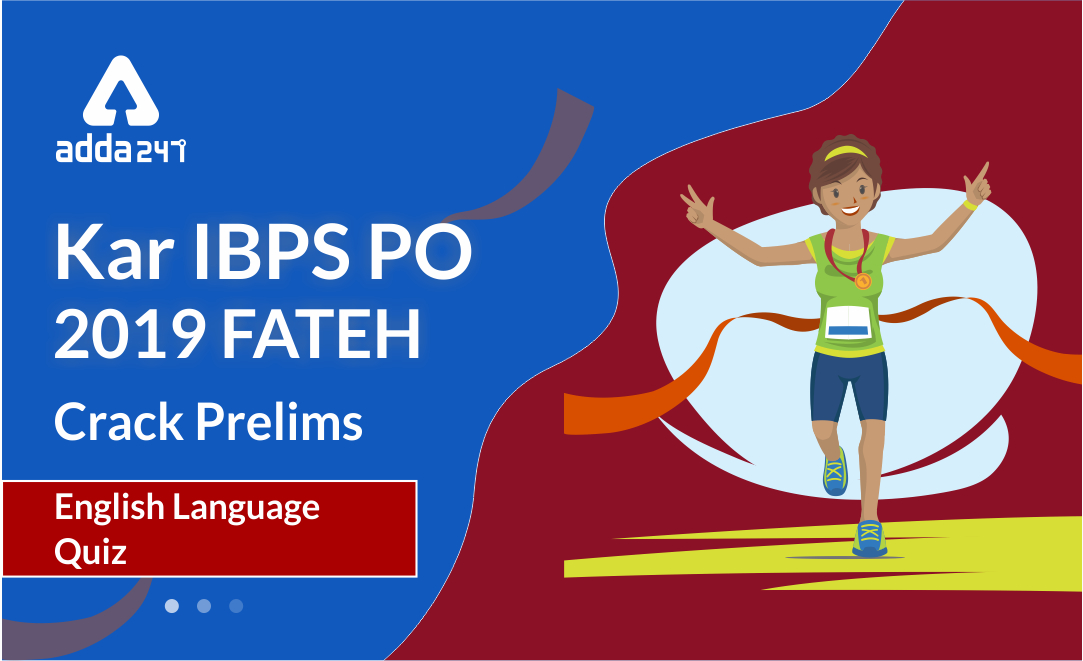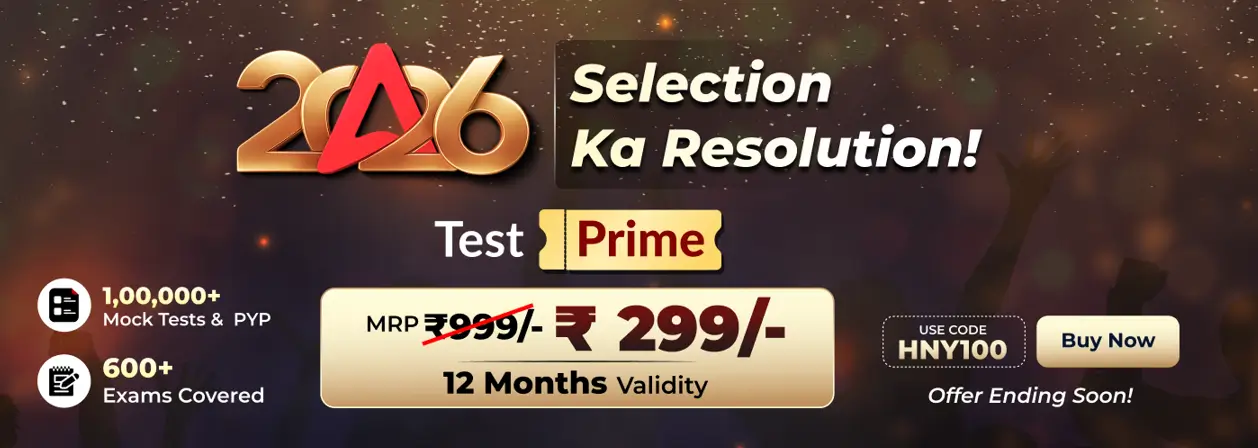IBPS PO Prelims English Quiz
The English language perplexes most of the students and makes one nervous during the examination even if the answer to the question is known. But there are no formulas to cramp or the longer the calculation to deal with. The mistakes that occur are because of the lack of confidence. With proper strategy, Study Notes, Quizzes, Vocabulary one can calm his/her nerves and excel in no time. Make the reading newspaper, editorial a habit, and also participate in the daily quiz. The IBPS PO 2019 is just one step away from your reach. Here is the quiz under the Study Plan ‘FATEH’, on the IBPS PO Prelims English Quiz and we have Reading Comprehension for 13th of September 2019. You can also check out the latest books for IBPS PO 2019 exam.
Directions (1-7): Read the following passage and answer the following questions based on the given passage.
“Amendments” have haunted the Right to Information (RTI) community ever since the RTI Act came into effect almost 14 years ago. Rarely has a law been so stoutly defended by activists. It is not possible to pass a perfect law. But it was a popular opinion strongly held by most RTI activists that a demand for progressive amendments could be used as a smokescreen by the establishment to usher in regressive changes.
Nevertheless, the sword of Damocles of regressive amendments has hung over the RTI with successive governments. Amendments have been proposed since 2006, just six months after the law was implemented and many times thereafter. Peoples’ campaigns, through reasoned protest and popular appeal, have managed to have them withdrawn.
The proposed amendments tabled in Parliament on July 19, 2019, have been in the offing for some time now. In the form of the Right to Information (Amendment) Bill, 2019, they seek to amend Sections 13, 16, and 27 of the RTI Act which carefully links, and thereby equates, the status of the Central Information Commissioners (CICs) with the Election Commissioners and the State Information Commissioners with the Chief Secretary in the States, so that they can function in an independent and effective manner. The deliberate dismantling of this architecture empowers the Central government to unilaterally decide the tenure, salary, allowances and other terms of service of Information Commissioners, both at the Centre and the States. Introducing the Bill in the Lok Sabha, the Minister of State for Personnel, Public Grievances and Pensions, Jitendra Singh, asserted that this was a benevolent and minor mechanism of rule-making rather than a basic amendment to the RTI law.
Why is there unseemly haste and determination to amend the law? Some feel that it is because the RTI helped with the cross-verification of the affidavits of powerful electoral candidates with official documents and certain Information Commissioners having ruled in favor of disclosure. It is unlikely to be a set of instances but more the fact that the RTI is a constant challenge to the misuse of power. In a country where the rule of law hangs by a slender thread and corruption and the arbitrary use of power is a daily norm, the RTI has resulted in a fundamental shift — empowering a citizen’s access to power and decision-making. It has been a lifeline for many of the 40 to 60 lakh ordinary users, many of them for survival. It has also been a threat to arbitrariness, privilege, and corrupt governance. More than 80 RTI users have been murdered because their courage and determination using the RTI was a challenge to unaccountable power.
The RTI movement has struggled to access information and through it, a share of governance and democratic power. The Indian RTI law has been a breakthrough in creating mechanisms and platforms for the practice of continual public vigilance that are fundamental to democratic citizenship. The most unequal struggle to extract information from vested interests in government needed an institutional and legal mechanism which would not only be independent but also function with a transparency mandate and be empowered to over-ride the traditional structures of secrecy and exclusive control. An independent Information Commission which is the highest authority on information along with the powers to penalize errant officials has been a cornerstone of India’s celebrated RTI legislation.
Q1. According to the above passage, what do you think was the most popular opinion held by RTI activists?
(a) Progressive amendments can be used as an effective tool by RTI to promote changes.
(b) Amendments are misleading the Right to Information Act.
(c) Many amendments have been proposed and implemented
(d) People should protest and appeal for withdrawal of amendments.
(e) None of these
S1. Ans. (a)
Sol. The passage is about how amendments have affected the Right to Information Act ever since it came into effect. This law was strongly defended by the activists. Though passing a perfect law is not possible yet RTI activists strongly held this opinion that unlike haunting the RTI Act with amendments, it will be beneficial if progressive amendments be used by RTI to bring about changes. Hence, option (a) is the right answer choice.
Q2. Why has the Central Government knowingly dismantled the RTI?
(a) It enables equating the status of CICs with Election Commissioners and State Information Commissioners.
(b) It authorizes Central government to separately determine the terms of service of Information Commissioners at Center and State level.
(c) The Central Government is empowered to bring all the high commissioners at an equal and single platform.
(d) Both (a) and (c)
(e) None of these
S2. Ans. (b)
Sol. Referring to the second paragraph, it elaborates that the amendments proposed in Parliament pursue amending sections 13,16 and 27 of the Act and thus they play a major role in equating the status of CICs with Election Commissioners and State Information Commissioners. Central Government utilizes this measured disassembling of the Act for determining service terms of Information Commissioners, at both Center and States. Thus, option (b) is the right answer choice.
Q3. According to the author, why he thinks that there is haste and determination to amend the RTI?
(a) Right to Information Act assisted Information commissioners who were in favor of exposure.
(b) It enabled cross-verification of the affidavits that influential and dominant electoral candidates present, with official records.
(c) RTI Act imposes a challenge to all those who misuse power for their self-interests.
(d) All of the above
(e) None of these
S3. Ans. (d)
Sol. Referring to the third paragraph of the given passage, here the author states that because RTI enables checking of affidavits presented by powerful candidates with government records, there is a kind of haste and determination to put some amendments in this act. Also, it casts a challenge to people who intend to misuse the power they are given. Hence, option (d) is the right answer choice
Q4. Why has the RTI ‘resulted in a fundamental shift’ in the given passage?
(a) It has allowed common citizen of India to access power and be a part of decision-making amidst the corruption, ignorance of laws and misuse of power on a daily basis. (b) It is a threat to privileged, arbitrators, and corrupt governance.
(c) RTI users have been murdered because of the courage and determination they displayed as using Right to Information Act is a challenge to uncontrolled power.
(d) All of the above
(e) None of these
S4. Ans. (d)
Sol. Referring to the third paragraph of the given passage, it is mentioned there that how RTI has created a difference, a shift among all the corruptions and misusage of laws. It has paved ways for normal people where they have access to power and decision making. Also, RTI users have been murdered because of their courage and determination to use RTI and expose the corrupt. Hence, option (d) is the right answer choice.
Q5. What is the fundamental to a democratic citizenship as described in the given passage?
(a) It has created mechanisms and platform enabling public vigilance.
(b) With this movement, a part of governance alongside democratic power is given to common people.
(c) People can now access all the information.
(d) Both (b) and (c)
(e) None of these
S5. Ans. (a)
Sol. Referring to the second line of fourth paragraph, it states how RTI has created effective mechanisms and a platform where citizens can keep an eye on governance establish a constant public vigilance. Hence, option (a) is the right answer choice.
Q6. Which among the following is the most similar in meaning with BENEVOLENT as highlighted in the given passage?
(a) Thoughtful
(b) Usher
(c) Vigilant
(d) Accessing
(e) None of these
S6. Ans. (a)
Sol. The term ‘benevolent’ means’ well-meaning and kindly’. ‘Thoughtful’ is the most similar in meaning with the given word.
Q7. Which of the following is the most opposite to the ERRANT as highlighted in the given passage?
(a) Wandering
(b) Guilty
(c) Innocent
(d) Wayfaring
(e) None of these
S7. Ans. (b)
Sol. The term ‘Errant’ means ‘erring or straying from the accepted course or standards’. ‘Innocent’ is the most opposite in meaning with the given word.
Directions (8-15): Read the following passage and answer the following questions based on the given passage.
Creating globally stronger banks, doing away with needless overlaps in operations and infrastructure, and ushering in economies of scale to bring down costs have always been at the heart of any consolidation drive. Sadly, none of these compelling reasons have led to the mega public sector bank mergers announced by the Centre, which have brought down the tally of PSBs to 12 from 18. The shotgun weddings brokered by the Centre appear to have been triggered by one reason — to ease the Centre’s burden of massive capital infusion into ailing PSU banks. Recent half-hearted attempts at consolidation have also delivered far from desirable outcomes. SBI’s bad loan problems only grew bigger after the merger of its five associate banks two years ago. Significant write-offs and persisting slippages have been eating into SBI’s profit and capital, impeding credit growth. The merger of Bank of Baroda with Vijaya Bank and Dena Bank last year was a thorny affair right from the start, given the weak finances of Dena. One year on, BOB’s numbers only confirm the underlying issues with forced mergers.
Unfortunately, the current round of proposed mergers stands on even weaker ground. Once the second-largest PSU bank, PNB, hit by the Nirav Modi scam — the worst-ever banking fraud — is still grappling with scarce capital and fresh frauds. With its own NPAs at over 16 percent, it is unclear how the Centre expects the bank to subsume the weaker OBC and United Bank. The logic for the merger of far weaker banks — Union Bank of India, Andhra Bank and Corporation Bank — is even more baffling. While the Canara Bank and Syndicate, as also the Indian Bank and Allahabad Bank, mergers involve at least one sturdier party, they come at the cost of debilitating the few stronger PSBs left. What is interesting but alarming to note is that the four mergers appear to have one common thread — bunching up banks operating on a similar core banking solution. Yes, this would ease integration, but has it been the only rationale for the matchmaking?
The Centre proposes to infuse capital into the merged entities based on their size and need. But it’s highly unlikely that this will be the last round of capital infusion. Also, the fate of the six PSBs left out of the merger spectacle — some of whom have NPAs of 20 percent or more — hangs in limbo. The much graver issue is that of finding the right leaders to steer the integration process at these colossal establishments. While the Centre has announced a slew of governance reforms, hoping to make managements more accountable to boards and give longer tenure to key officials to implement plans, these are unlikely to bring about significant structural changes. The move is also singularly ill-timed, with GDP growth plummeting to a six-year low. Turmoil in the banking sector can only hurt growth further.
Q8. What are the expected reasons for bank-mergers according to the given passage?
(a) To create stronger banks at global level
(b) Putting an end to overlapping of infrastructures and operations
(c) Accompanying at economic scale for bringing down the costs
(d) Only (a) and (b)
(e) All of the above
S8. Ans. (e)
Sol. Referring to the introductory line of the given passage, it explains the
Q9. Why is the step taken by government in context of bank merger regarded as ‘shotgun wedding’ by the author?
(a) The Center wanted to reduce its burden of infusing massive capital into indisposed Public Sector Banks.
(b) They employed half-hearted attempts while merging PSBs
(c) The merger of bank failed to give desirable outcomes
(d) Both (a) and (b)
(e) None of these
S9. Ans. (d)
Sol. Referring to the first paragraph of the given passage, it is mentioned there that the Center wanted to ease up its burden that’s why it came to the decision of merging PSBs however the results were not as they were expected. Hence, option (d) is the right answer choice. Here, the term ‘shotgun wedding’ is used as the Center was forced to do the mergers without considering its possible consequences.
Q10. As given in the passage, why merger of BOB with Vijaya Bank and Dena Bank is termed as a ‘thorny affair’?
(a) It was difficult right from the beginning due to weak finances of Dena Bank.
(b) Even after one year, BOB’s figures showcase underlying issues that come up with forced mergers.
(c) Bad loans problems got enhanced after mergers
(d) Both (a) and (b)
(e) None of these
S10. Ans. (a)
Sol. The term ‘thorny affair’ means full of complexities and difficulties. Referring to the first paragraph of the given passage, it is clearly mentioned there that merger of BOB with Vijaya Bank and Dena Bank was full of complexities right from the start. Hence, option (a) is the right answer choice.
Q11. According to the given passage, what was the one thing in common among the four mergers?
(a) To operate banks on a similar banking solution platform
(b) to debilitate the PSBs
(c) to involve one stronger bank in the merger
(d) All of the above
(e) none of these
S11. Ans. (a)
Sol. Referring to the second paragraph of the given passage, ‘the four mergers appear to have one common thread — bunching up banks operating on a similar core banking solution.’ It explains the common reason involved behind merging the four banks. Hence, option (a) is the right answer choice.
Q12. In the given passage, what does the phrase ‘hangs in limbo’ refers to?
(a) The fate of six PSBs that are left out after the merger scenario is an uncertain situation cannot be controlled
(b) subsuming weaker banks
(c) to grapple with scarce funds
(d) Both (b) and (c)
(e) None of these
S12. Ans. (a)
Sol. The phrase ‘hangs in limbo’ refers to ‘an uncertain situation that you cannot control and in which there is no progress or improvement’. In this context, option (a) is the right answer choice
Q13. Which of the given options is most SIMILAR to ‘GRAPPLE’ as highlighted in the passage?
(a) Deal
(b) holding
(c) aggressive
(d) formidable
(e) arduous
S13. Ans. (a)
Sol. The term ‘grapple’ means ‘to fight or struggle or deal with’. Hence, option (a) is the right answer choice.
Q14. Which of the given options is most OPPOSITE to ‘DEBILITATING’ As highlighted in the passage?
(a) Weaken
(b) Invigorate
(c) exhaust
(d) weary
(e) fatigue
S14. Ans. (b)
Sol. The term ‘debilitating’ means to ‘weaken or hinder something’. In this context, ‘invigorate-strengthen’ is the most opposite word in meaning to the given word.
Q15. Which of the following options is most similar in meaning with ‘COLOSSAL’ as highlighted in the given passage?
(a) Miniscule
(b) Little
(c) Huge
(d) Minute
(e) Tiny
S15. Ans. (c)
Sol. The term ‘colossal’ means ‘ massive or huge’. In this context option (c) is the right answer choice.




 English Language Quiz For Bank Foundatio...
English Language Quiz For Bank Foundatio...
 English Language Quiz For SBI Clerk Prel...
English Language Quiz For SBI Clerk Prel...
 English Language Quiz For SBI Clerk Prel...
English Language Quiz For SBI Clerk Prel...








